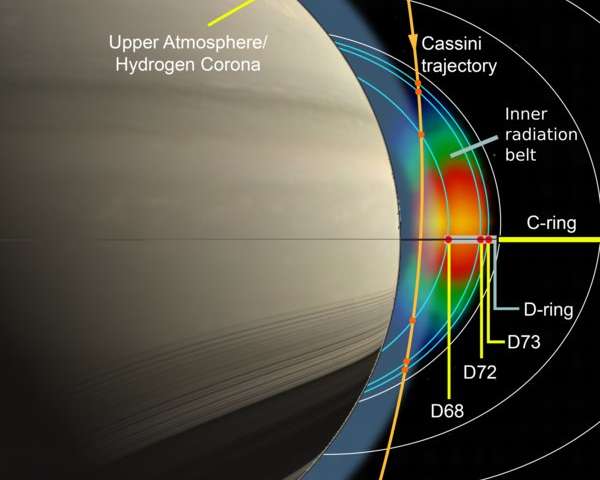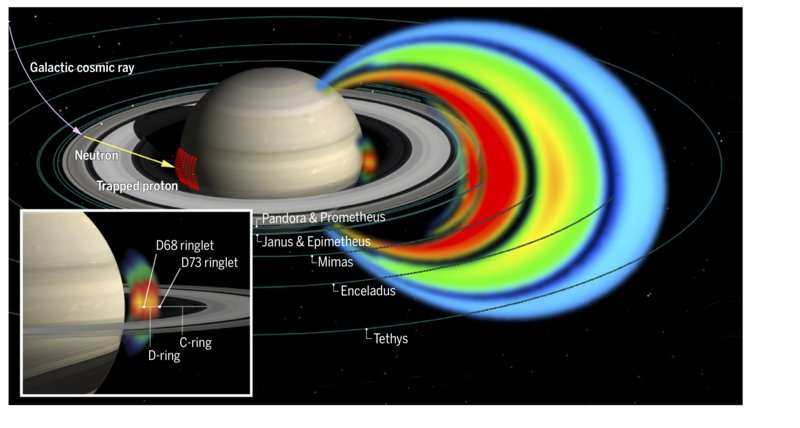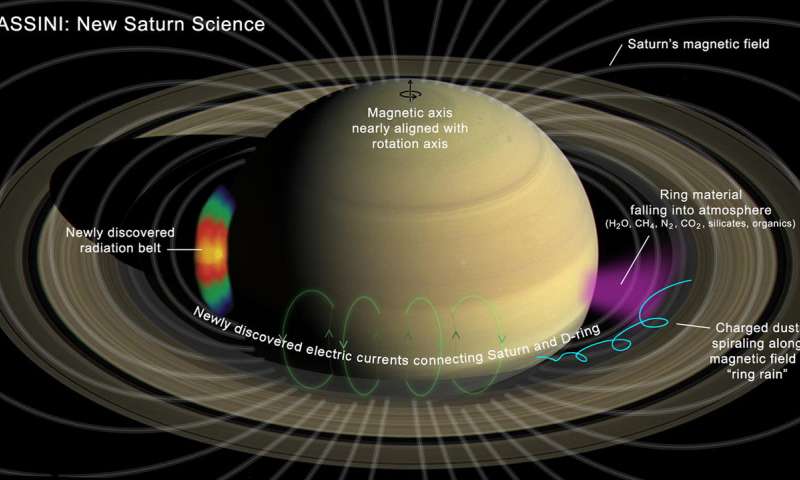At https://phys.org/print457947412.html … results from Cassini's final mission phase show protons of extreme energies between the planet and its rings. A series of 6 article in the journal Science (5th October 2018) describe the initial results and thoughts – by a vareity of authors.
 …
…  … the region is unique in that it provides laboratory like conditions for study as its protons appear to be created by a stable process and are guided and controlled by Saturn's magnetic field. In Saturn's main radiation belt, similarities exist with earth's radiation belt, the conditions differ from the radiation belt between Saturn and its rings.
… the region is unique in that it provides laboratory like conditions for study as its protons appear to be created by a stable process and are guided and controlled by Saturn's magnetic field. In Saturn's main radiation belt, similarities exist with earth's radiation belt, the conditions differ from the radiation belt between Saturn and its rings.
At https://phys.org/print457946857.html … more highlights from Science are noted and thse are complex organic compounds embedded in water nanograins that rain down from Saturn's rings (water, silicates, methane, carbon monoxide, ammonia, nitorgen and carbon dioxide). The composition differs from those on the moons Enceladus and Titan.
Saturn and its rings are interconnected – an electric current connects the rings to the upper atmosphere.
The magnetic field itself is anomalous as it does not conform to mainstream's theory of how such fields are formed.

At https://phys.org/print457873931.html … concerns Saturn's magnetic field, and https://phys.org/print457874117.html … chemical complexity of the rings etc.
At https://gizmodo.com/cassini-grnad-finale-reveals-saturns-rings-blast-the… … we have a similar take on the Science findings. However, see https://tallbloke.wordpress.com/2018/10/06/latest-insights-into-saturns-… .. for a different take (and see also the comments). It was thought that magnetic fields around a planet can only form when there is a discernible tilt between the rotation axis and the magnetic field axis. This is the situation on Earth where the magnetic poles are offset from the geographic poles. This tilt sustains currents in a liquid metal layer deep inside the planet which on earth is thought to be a liquid iron nickel layer around the solid iron core. On Saturn it is believed to be a metallic hydrogen layer surrounding a small rocky core.
